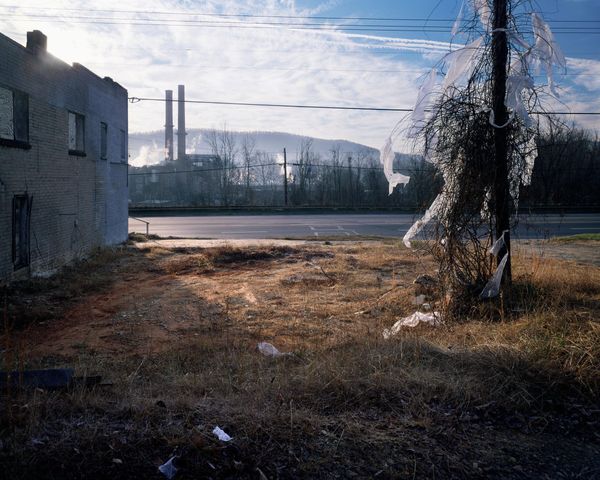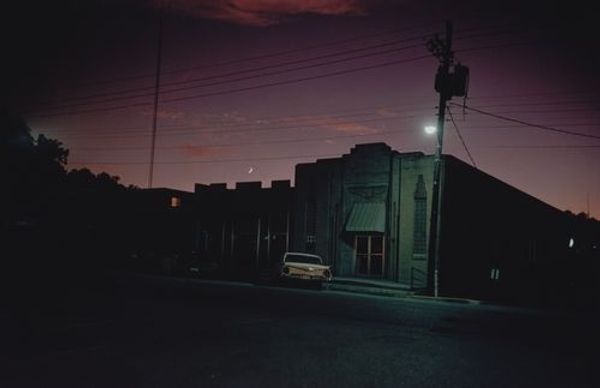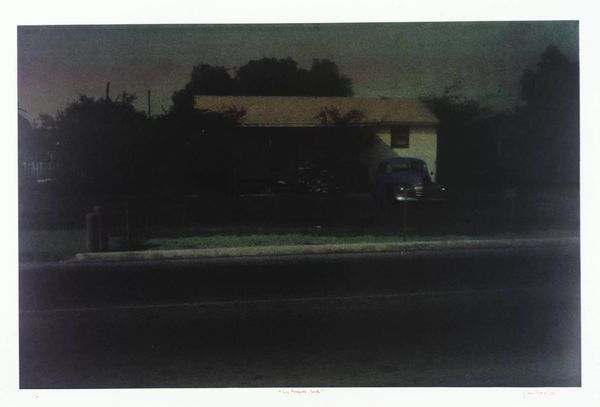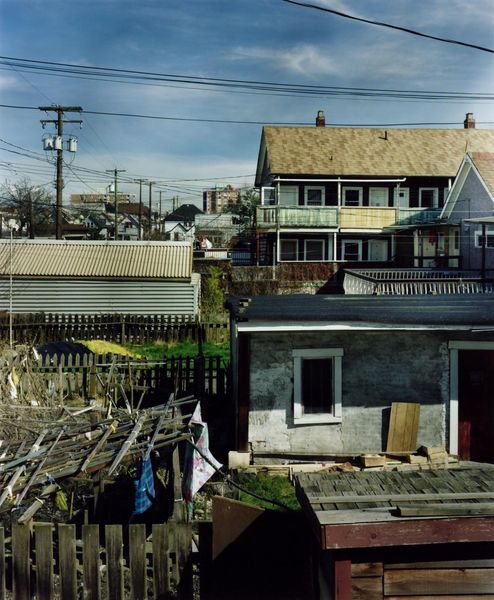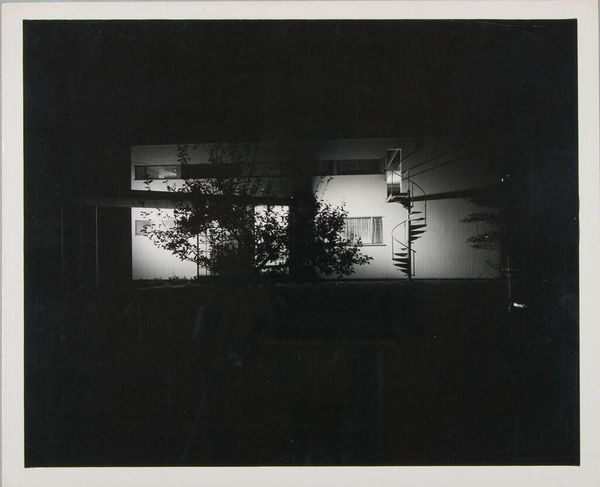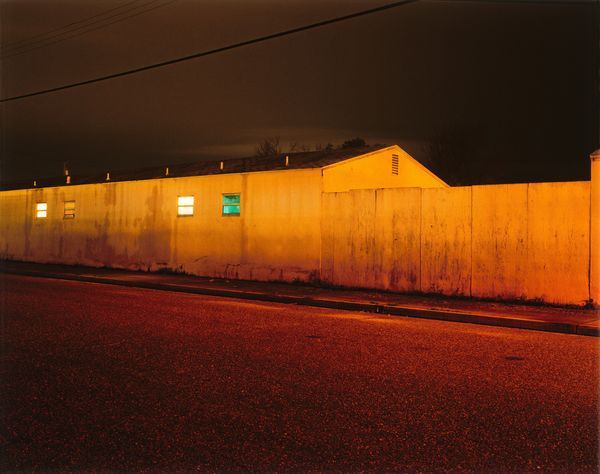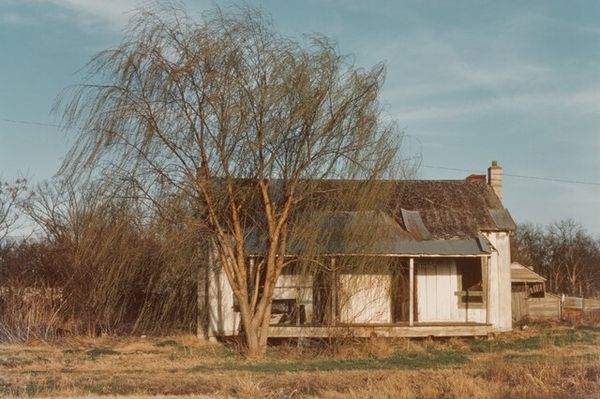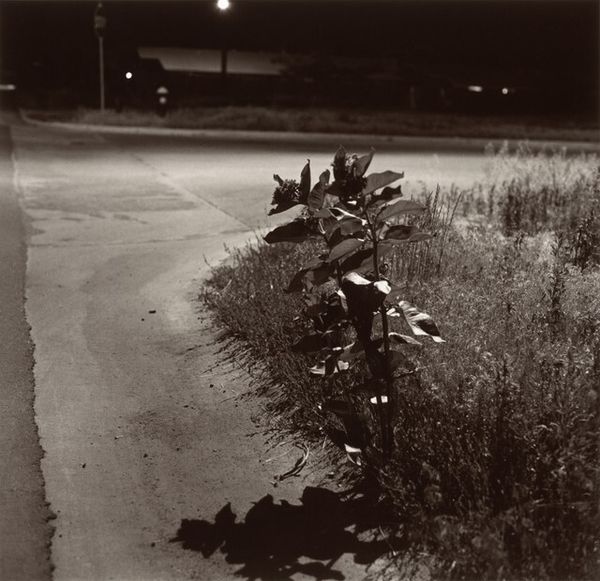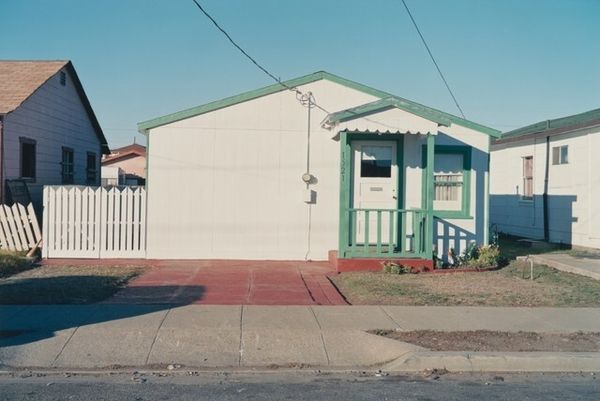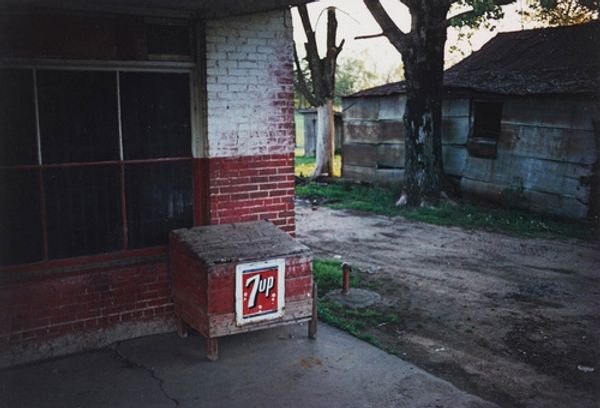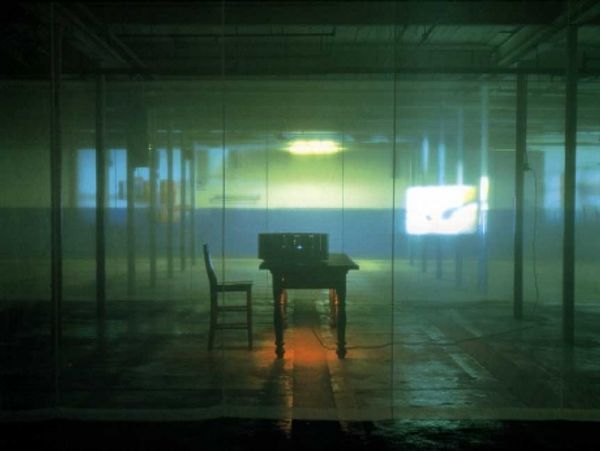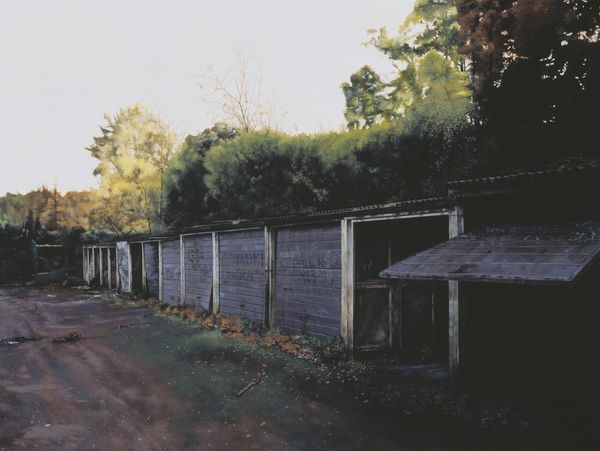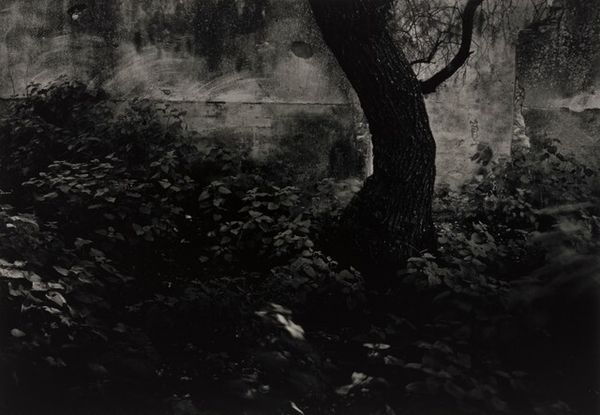
photography
#
urban landscape
#
landscape
#
urban cityscape
#
street-photography
#
photography
#
derelict
#
urban life
#
urban art
#
cityscape
Dimensions: image: 36.3 × 45.3 cm (14 5/16 × 17 13/16 in.) sheet: 40.7 × 50.8 cm (16 × 20 in.)
Copyright: National Gallery of Art: CC0 1.0
Curator: Joe Maloney's "Paramus, NJ," likely created between 1980 and 1982, presents a captivating urban landscape. What are your first impressions? Editor: This photograph feels strangely familiar and isolating. It is as though time stands still in the violet twilight, that casts a melancholy hue. Curator: Note how the composition is structured. Maloney employs a straightforward, almost architectural framing, with the building as the dominant horizontal form intersected by vertical elements like poles and bare trees. The power lines form complex geometric patterns against the evening sky. Editor: It's the kind of place you’d stumble upon in a half-forgotten dream. The muted color palette amplifies a kind of stark, poignant beauty that reminds us about loneliness inherent in spaces on the edge. It sparks in me the desire to create a story based on the photograph. A man fleeing or seeking refuge; which one might it be? Curator: Consider the effect of light in this photograph. The harsh glare of the street lamp on the left is juxtaposed with the diffused glow of what appears to be a neon sign in the far right corner of the roof. The artificial illumination adds to the starkness, contrasting sharply with the encroaching darkness. Note, the shadows add to the visual texture. Semiotically, the lighting serves to further the derelict ambiance of a bygone era, adding layers of texture for our eyes. Editor: You’re so right! Those geometric shadows and lights create such stark contrasts in the frame. A formal elegance balanced with raw, vulnerable human feeling. I can almost feel the damp earth and smell the rain in the air through that play of light and shadow. I love the mood this creates. Curator: Exactly. By juxtaposing such visual languages, Maloney invites us to meditate on urban existence, the transition of a location between function and ruin. A dialogue, between utility and decay, of form and light, resulting in the work’s evocative mood. Editor: In its own way, this image of what most people would just consider an anonymous corner of a place embodies so much emotion, with such subtlety, doesn’t it? I walk away appreciating that melancholy vibe of an ending being reborn. Curator: Precisely, that is why "Paramus, NJ" compels, in its melancholic examination of time, place, and memory.
Comments
No comments
Be the first to comment and join the conversation on the ultimate creative platform.
